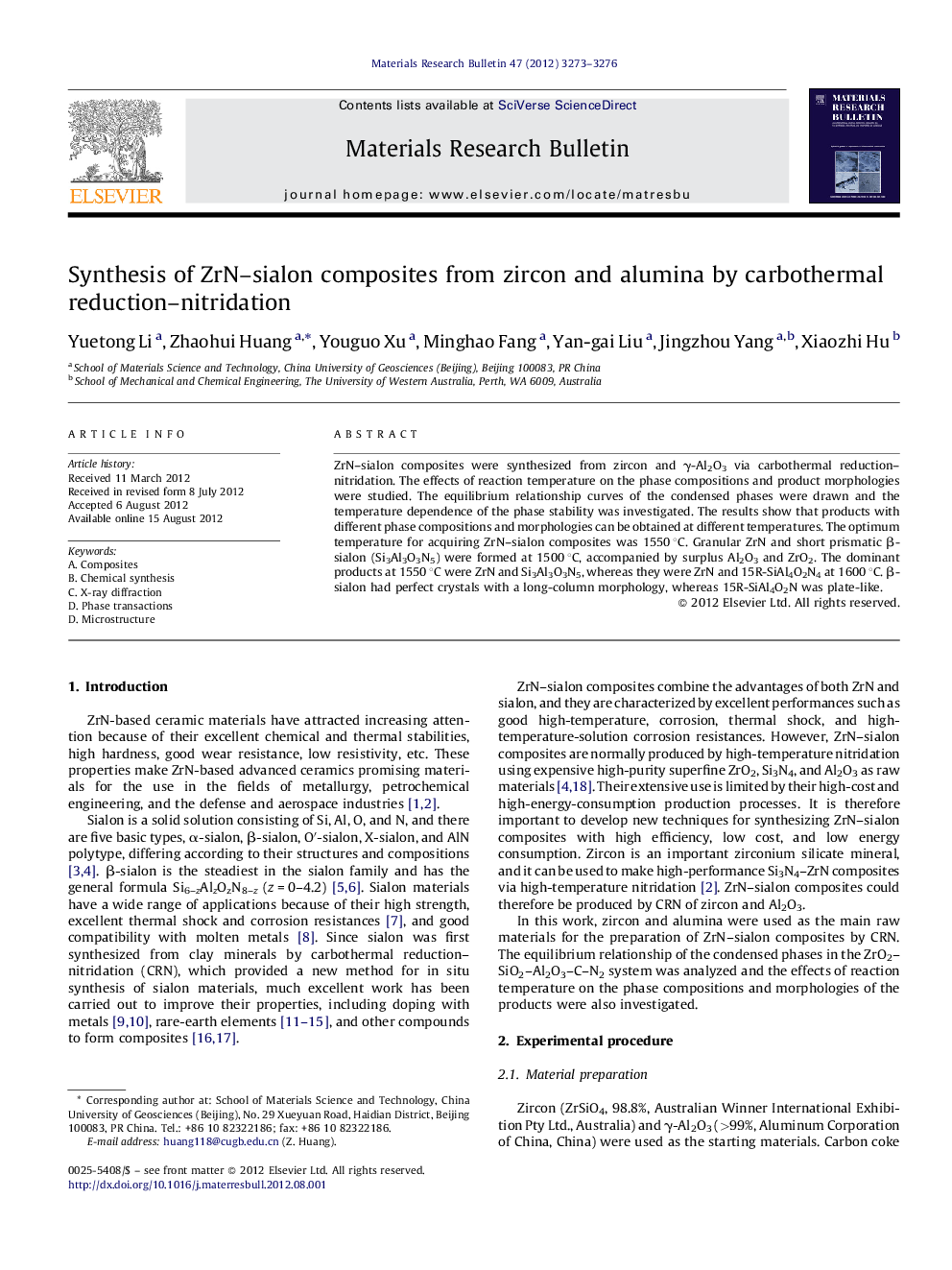| Article ID | Journal | Published Year | Pages | File Type |
|---|---|---|---|---|
| 1490095 | Materials Research Bulletin | 2012 | 4 Pages |
ZrN–sialon composites were synthesized from zircon and γ-Al2O3 via carbothermal reduction–nitridation. The effects of reaction temperature on the phase compositions and product morphologies were studied. The equilibrium relationship curves of the condensed phases were drawn and the temperature dependence of the phase stability was investigated. The results show that products with different phase compositions and morphologies can be obtained at different temperatures. The optimum temperature for acquiring ZrN–sialon composites was 1550 °C. Granular ZrN and short prismatic β-sialon (Si3Al3O3N5) were formed at 1500 °C, accompanied by surplus Al2O3 and ZrO2. The dominant products at 1550 °C were ZrN and Si3Al3O3N5, whereas they were ZrN and 15R-SiAl4O2N4 at 1600 °C. β-sialon had perfect crystals with a long-column morphology, whereas 15R-SiAl4O2N was plate-like.
Graphical abstractFigure optionsDownload full-size imageDownload as PowerPoint slideHighlights► ZrN–sialon composites were directly synthesized from zircon and γ-Al2O3. ► The morphologies and phase compositions of products changed with the temperature. ► The comprehensive and systematic thermodynamic relation of the reaction process was analyzed comprehensively. ► This new technique for synthesizing ZrN–sialon composites can reduce the cost and energy consumption.
